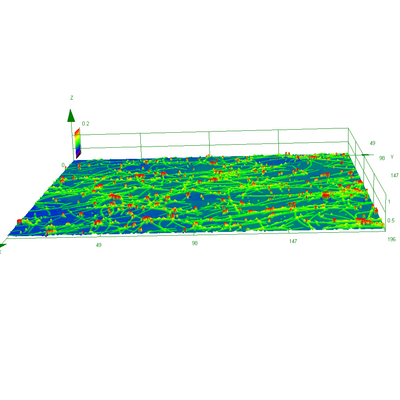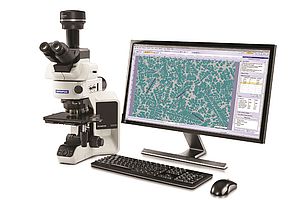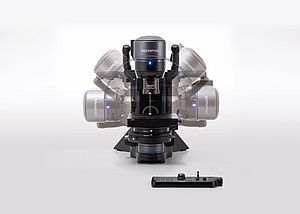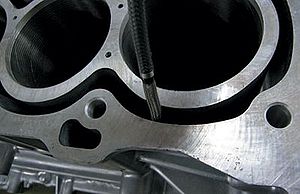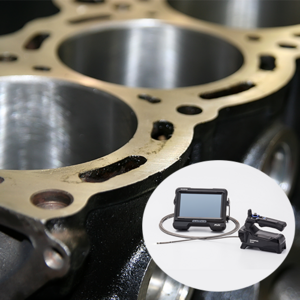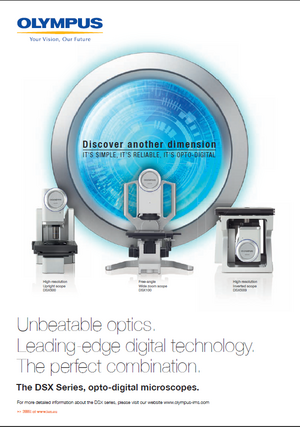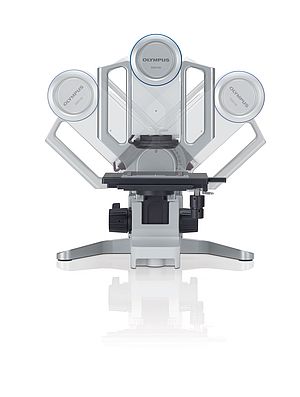Plastic is set to change the way we design and consume electronic devices, not least in the area of photovoltaics. Solar energy may be a popular source of clean, green, renewable energy, but the materials and manufacturing processes of conventional silicon-based solar cells are far from green.
With the increasing strain on the global power grid and the drive towards sustainable energy production, researchers at the University of Oldenburg are busy developing alternative materials for solar cell manufacture that are both non-hazardous and readily available - creating flexible, sustainable and affordable thin-film solar cells for consumer applications.
Investigating solar cell function via surface evaluation
Like many electronic devices, organic solar cells are formed of a complex multi-layered structure, with the functional interfaces vital for performance. In addition, the so-called bulk heterojunction design includes an active layer consisting of a discontinuous blend of two materials - a polymer (an electron donor) and a fullerene (electron acceptor). These split the charges derived from a photon, which migrate to their respective electrodes and lead to the charge separation necessary to form an electrical circuit.
Such a structure lends itself perfectly to surface evaluation techniques, and while tactile profilometry and Atomic Force Microscopy (AFM) have been the mainstays of surface metrology for a number of years, 3D confocal laser scanning microscopy (CLSM) is becoming an ever more popular tool.
Combining the ability to generate detailed, true-colour optical images with the non-contact capabilities of laser scanning technology, the confocal laser scanning microscope really comes into its own as an optical profilometer. Faster and more efficient than stylus-based techniques, 3D CLSM is able to measure soft or adhesive surfaces and offers a resolution of 0.2 µm. As such, the recent introduction of an Olympus LEXT OLS4100 3D confocal laser scanning microscope into Dr Manuela Schiek's laboratory has greatly enhanced their research into alternative means of photovoltaic manufacture.
Photon harvesting with organic semiconductors
Although the bulk heterojunction enhances solar cell function, polymers are often roughly defined mixtures of material with differing chain lengths, exhibiting highly batch-specific properties. In contrast, molecular semiconductors are defined building blocks with properties that can be tweaked by small changes to their structure, which can therefore be optimised for improved solar cell function. An interesting class of such molecules are the squaraine dyes, and Dr Schiek's research is investigating an active layer formed from squaraines mixed with a fullerene acceptor.
The thickness of the active layer also plays a role in performance: too thin and the mobility of charge carriers is restricted, but too thick and both light absorbance and flexibility are significantly reduced. Accurate measurement of layer thickness is therefore vital.
Within Dr Schiek's laboratory, once a scratch is made through the active layer surface with a fine needle, the step edges of this 'valley' are measured using profilometry. Tactile profilometry was previously relied upon, but the softness of the organic material hampered accurate measurement. As the needle steps up from the valley, it scratches into the surface and thus underestimates the height - often by around 20 nm. Considering the average thickness of the active layer is 100 nm, this level of error is highly significant.
With 3D confocal laser scanning microscopy, it is the laser that scans the surface, and such a non-contact approach achieves far greater accuracy of surface profilometry.
Transparent electrodes: the bigger picture
Combining optical transparency with conduction, transparent electrodes form the anode of the solar cell while also allowing light to pass through to the active layer. Indium tin oxide (ITO) is currently the industry standard, but reserves of the rare indium are fast running out. Moreover, ITO is a brittle material, restricting its use in mechanically flexible devices, and the hunt is on for a lightweight, cheap, flexible alternative that is also compatible with large-scale processing.
One promising alternative is a mesh of silver nanowires (AgNWs) embedded in a polymer matrix and Dr Schiek's laboratory also focuses on their production, their subsequent processing to form the electrodes and ultimately the integration into organic solar cells.
For optimum conductivity, a uniform connection must exist between the active later and electrode, demanding a homogenous AgNW mesh. This is challenging to achieve across the whole solar cell using current spin-coating production techniques, and surface roughness evaluation plays a central role in optimising the synthesis protocol.
AFM has been the main technique employed for the surface roughness evaluation of the AgNW mesh, but the introduction of the LEXT OLS4100 has vastly improved the efficiency of this. Firstly, AFM is time consuming. Where it can often take a whole day to acquire a single useful image, with 3D CLSM, image acquisition takes minutes. Dr Schiek also found that expanding the field of view using the image stitching function allowed her to view a more representative sample of the electrode surface for detecting aggregations - visualising an area of one mm2 (ten times greater than possible with AFM).
The next generation of opto-electronic components
Feeding the global power grid in a sustainable fashion remains one of the biggest challenges faced by the modern world, and it's an exciting time for research into innovative solutions. Moreover, transparent electrodes have far-reaching potential throughout opto-electronic applications, including LEDs and touch screens - where developing alternatives to ITO is also a focus of intense investigation. Opto-electronic interfaces might one day even enable sight restoration, with retinal implants using light to generate electrical output and stimulating neuronal activity.
It's clear that the next generation of opto-electronic devices depends on utilising widely available materials, and evolving light microscope technologies play an important role in driving such investigations.





